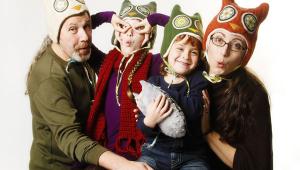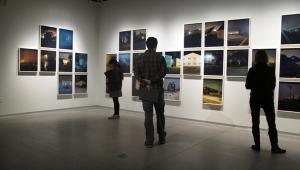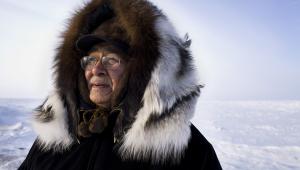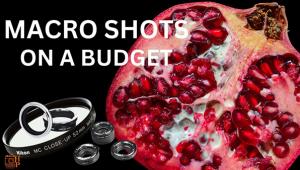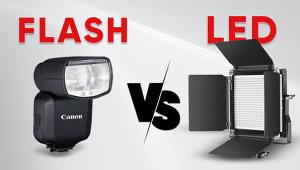Commercial Photography Today; An Interview With Nick Vedros
Nick Vedros (www.vedros.com) graduated from the University of Missouri with a degree in Photojournalism in 1976 and then quickly found his true passion in the world of commercial photography. From his Kansas City-based photo studio, Vedros has won top honors from the ADDY Awards, Effie Awards, Archive International, Communication Arts, the Top 200 Advertising Photographers, and the Canon Explorers of Light program. His award-winning photography has brought him advertising photography from top clients like Apple, Bayer, Capital One, Coca-Cola, DuPont, IBM, Kodak, Microsoft, Sony, and Sprint.
 |
|
|
Shutterbug: What are the major changes you have seen in the commercial photography market in the last few years?
Nick Vedros: The first thing that comes to mind for me is that the client has more alternatives and that affects commercial photographers in a really negative way. The Internet opened up stock photography and then after stock, it moved quickly to microstock, royalty free, and all that happened at a pretty blinding speed. It seems like there is less and less assignment work because clients are taking an already made image and then slapping a headline on it.
Second, digital technology has allowed clients who’ve purchased a camera for their company to shoot their own small projects. There are also more amateurs cutting into these low-end commercial areas. Then there is just simply buying a high-quality digital camera; it seems to have gotten rid of a lot of the large format landscape for photographers. Photographers once relied on a view camera for tilts and shifts but now if you have a digital camera and Photoshop skills you can change the perspective of something. Also, delivery of images sped up in an amazing way. Now you load an FTP file and images can be sent across continents in minutes.
Third is the thing that has not changed. I’m based in a medium-sized city; Kansas City has a base population of about 2 million people. My challenge was to make a national living out of a very moderate market like Kansas City that has nothing extremely special about it—other than we’re located in the middle of the country, in the heart of America. I saw 20 years ago the direction I needed and that was to differentiate myself to get national work. I was making a living as a good generalist locally but while I was doing that, I started assembling a portfolio with something very different, humor and “over-the-top” images—sort of a cross between The Far Side and Norman Rockwell. Some of them were so ridiculous and over the top that people thought they were fake photos, but they would catch their eye.
 |
SB: What does the commercial photography market look like for you today?
NV: Today clients will work with us if they are from out of town and sometimes they even choose to give us a pretty decent sized project and not to fly in for it. It is very scary, but nevertheless it’s great work. I just finished two beer ads out of Chicago with the Leo Burnett ad agency and the art director and the account executive came in, but no client. We had a really good time, we did great work and the client did not feel the need to come because the ad agency e-mailed them the updates. I still much prefer when a client shows up on a shoot. The client can see how much value they are getting—where all the production dollars went. It always seems so easy as a sketch but then when the client sees how much we have to build, that we have 18 people on the set, that we have to cast models with wardrobes and makeup and lighting. When they see all that, then they can say, “I do see why this thing cost so much now.”
SB: You were quite famous for your advertising work using film. How do you feel about digital?
NV: I absolutely love digital; I would never trade it back for film. I was a film master; Kodak had me test film and then launched an entire campaign around my film abilities. And then almost overnight all that was taken away from me—game over. I had to relearn digital but I jumped in and did it and I wouldn’t trade it for the world. I love the digital world, I love shooting digital.
SB: Commercial photography has changed a lot for the good…what about the worst of the changes?
NV: There is an unbelievable insecurity in photographers now because you can be replaced so easily. Even I feel it—as special as people tell me my work is, I still feel that I’m highly replaceable. That the client could get somebody else who is willing to step in and do it from another city. Part of this is clients will also bid you against photographers who are not in the same league. The photographer may have a few nice images on their site that they did for personal projects but I’ve heard from clients that they really don’t know the photographer’s problem-solving capabilities. They don’t know whether the photographer can really knock a home run all the time.
Plus the photographers will bid so low because they’re so desperate to get the work that they almost can’t produce the project. We bid with a safety margin to make sure that we can produce it perfectly, so now the client is not always bidding apples to apples and that’s a concern.
To try and fix this, when you describe the project to the client and how much it’s going to cost on the estimate and what rights, you have to display your values and why you will make a difference. I’ve always taken a proactive stance and we have become stronger at communicating what we’re actually going to give clients for their money. I think this is one thing photographers have to look at as a solution. It’s a simple formula…“why does it cost money doing it this way“ and “here’s my approach” method. We create production books that show everything we’re going to do such as how wardrobe is handled and props are done. We include information on our production team, experts who have been in the business for 25 years and do amazing work. The solution is to do some upfront selling of yourself to justify why you deserve that job.
 |
- Log in or register to post comments






